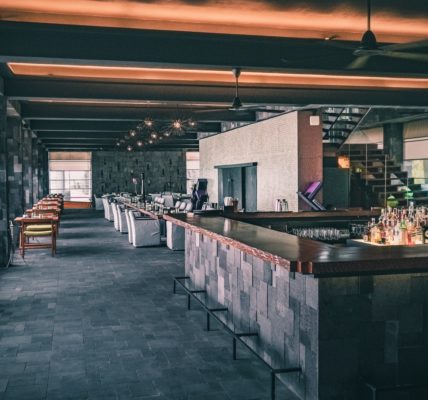The introduction of heating, ventilation, and air conditioning systems (HVAC) is designed to meet the environmental requirements and comfort of occupants. HVAC systems are used in various building types such as industrial, commercial, residential, and institutional buildings.
Heating and cooling solutions are responsible for keeping the temperature at a comfortable 72 degrees, keeping humidity constant between 40% and 60%, and keeping indoor air quality below 1000 ppm. An air conditioning system lowers the temperature by directing air through cooling or water-cooling systems, thereby removing excess moisture from the air. A heating system works in contrast to an air conditioning or cooling system, in which the air is directed through a system that heats it with water, radiators, coils and gas.
If your home has central air conditioning, the cooling air flows through the same channels and the heat is regulated by the same thermostat. A ventilation system keeps the air clean by circulating it through fans and passing it through filter systems. Hot air sources such as a stove and cooling air (such as air conditioning) in a house use the same distribution and control system.
With this system, a large compressor unit is located outdoors and drives the process indoors, where coils are filled with refrigerant and the cooling air is distributed through the ducts throughout the house. Central air conditioners are the same duct system that uses a stove to force warm air into the heating. The heat is pumped into the central air conditioning system, the circuit is reversed and used for heating in the winter months.
There are also central controls that can be used to control the system, so-called thermostats. These controls help you keep your home at a controlled temperature and when the air meets this temperature, the system shuts off, saving power and money.
Heat recovery systems can heat and cool in several areas at the same time, making them a suitable solution for buildings with different rooms. Heating installation can require boiler units, pumps, heat exchangers, pressure reduction systems, controls, air compressors and other equipment, cooling systems require water coolers, cooling towers in large buildings, condensers, water pumps and heat exchangers, air conditioning systems have controls, air compressors and some other equipment. The thermal energy transfer medium between air and water is represented by the air-to-water system and the water system.
This system is impractical for multistorey buildings with limited roof space and large vertical distances and includes a system based on water cooling, a water source and a heat pump, which is preferred for these buildings. A VAV system, packaged as a roof unit, is more practical for installations with a large roof area in relation to their room area, as air is the main medium for heat transfer. Efficient commercial HVAC systems extract waste heat from the building and use it to heat water in other rooms.

A single split system can heat and cool individual rooms making it ideal for shops, servers, cafes and small offices. Variable refrigerant flow (VRF) and variable refrigerant volume (VRV) refer to the same type of commercial HVAC system. This is a great HVAC solution for medium to large applications like hotels, large offices, and retail space.
Shifting stale air to fresh air ventilation can help bring your office building back into balance and improve indoor air quality. If your building has air conditioning, keep your office cool and warm. A heat pump system always ensures heating and cooling throughout the building, ideal for open spaces.
Humidifiers bring moisture into dry air, and air purifiers help remove allergens from the air. Heaters do their part to heat things up when it is cold outside, but air conditioning and fans are needed in warmer climates to cool things down, especially in hot summer months. There are several reasons why mini-split air-conditioning heat pumps are so efficient.
That’s easier said than done in open office spaces that don’t have many traditional walls, but there’s no reason not to skip the expertise in designing HVAC systems in your plans. Mini-split systems are not a good idea for rooms where the environment is expected to be dusty or emit aerosols and particles. Large mini-split air conditioners and heat pumps do not always have ducts and can suffer from air leaks and heat gain due to lack of insulation, attics, and air pressure imbalances, so that air conditioners and heaters only work when they are needed.
Occupancy sensors can track how many people are using the room at a given time and send messages to the HVAC control system. For example, a sensor could detect that a large meeting room is being used, and the cooling should be increased to accommodate the increased load on the area.
The variable-speed drive uses several system components, including cooling towers, fans, water pumps and air conditioning units. If you have a room that needs more than four tons of cooling, it is a better idea to consider a variable refrigerant flow system. As VRF (variable refrigerant flow) or VRV (variable refrigerant volume) systems, they are best suited for large mixed-use building types such as large offices and hotels.
Energy Star certified heating and cooling units are certified to save energy without sacrificing features or functionality. Commercial HVAC systems based on water sources and heat pumps tend to be the better choice for versatility and energy efficiency. Economizers and water-cooling systems: These systems can be applied to certain climates and systems that provide air conditioning for low outdoor humidity.
Whether it is a muggy day in summer or a cold, frosty day in winter, without our heating and air conditioning systems it is difficult for us to get everything under control. Natural methods of warming up (building a fire) and cooling down (opening the windows) without going through our heating / cooling systems can go a long way and do a lot to keep us in balance as we spend our day.












